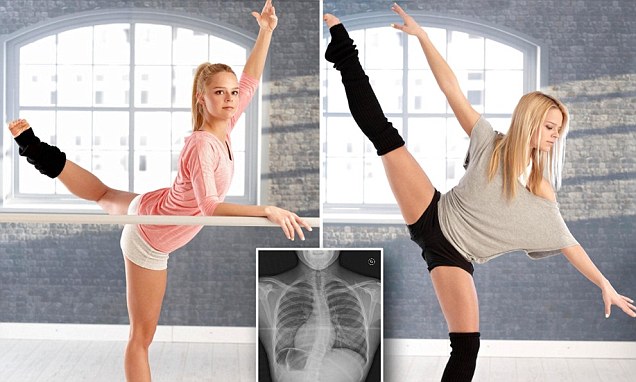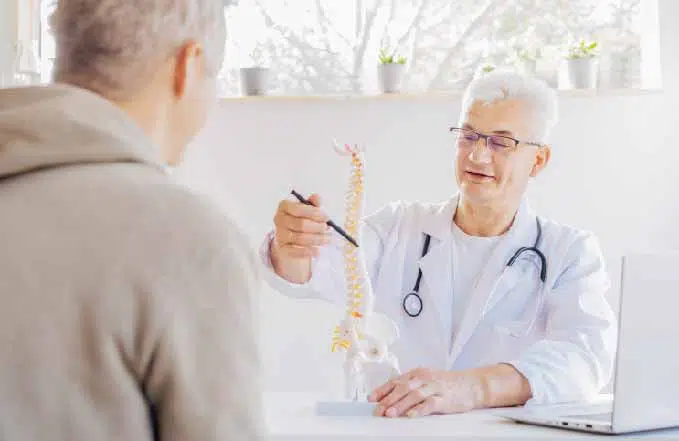Scoliosis is a medical condition characterized by an abnormal curvature of the spine. While many cases of scoliosis are mild and do not pose significant health risks, severe scoliosis can have life-threatening implications. It is important to understand the potential risks and complications associated with severe scoliosis to ensure early intervention and appropriate treatment.

The Potential Life-Threatening Risks of Severe Scoliosis
Severe scoliosis can lead to a range of life-threatening risks and complications. These include respiratory complications, cardiovascular issues, neurological complications, spinal cord compression, organ dysfunction, and psychological impact. Each of these aspects will be explored in detail to provide a comprehensive understanding of the potential dangers associated with severe scoliosis.
Respiratory Complications: How Scoliosis Can Affect Breathing
One of the most significant risks of severe scoliosis is its impact on respiratory function. As the spine curves, it can compress the lungs and restrict their ability to expand fully. This can lead to reduced lung capacity, difficulty breathing, and an increased risk of respiratory infections. In severe cases, scoliosis can even cause respiratory failure, which can be life-threatening 1.

Cardiovascular Issues: Exploring the Impact of Scoliosis on the Heart
Severe scoliosis can also affect the cardiovascular system. The abnormal curvature of the spine can put pressure on the heart and blood vessels, leading to decreased blood flow and potential heart problems. Studies have shown that individuals with severe scoliosis are at a higher risk of developing cardiovascular complications such as hypertension, arrhythmias, and even heart failure 2.
Neurological Complications: Nerve Damage and Paralysis
In some cases, severe scoliosis can cause nerve damage and paralysis. As the spine curves, it can put pressure on the nerves that run along the spinal column. This pressure can lead to pain, numbness, and weakness in the affected areas. In rare cases, severe scoliosis can even result in paralysis, which can have devastating consequences for an individual’s quality of life 3.
Spinal Cord Compression: The Dangers of Severe Scoliosis
Severe scoliosis can also lead to spinal cord compression, which occurs when the abnormal curvature of the spine puts pressure on the spinal cord. This compression can cause a range of symptoms, including pain, weakness, and loss of sensation. If left untreated, spinal cord compression can result in permanent damage to the spinal cord and its associated functions 4.

Organ Dysfunction: How Scoliosis Can Affect Internal Organs
The abnormal curvature of the spine in severe scoliosis can also affect the function of internal organs. As the spine twists and compresses, it can put pressure on the organs, leading to reduced function and potential complications. For example, severe scoliosis can impact the digestive system, causing issues such as acid reflux, difficulty swallowing, and malnutrition 5.
Surgical Interventions: Risks and Considerations for Severe Scoliosis
In some cases, surgical intervention may be necessary to correct severe scoliosis. While surgery can be effective in reducing the curvature of the spine and alleviating symptoms, it is not without risks. Complications associated with scoliosis surgery include infection, bleeding, nerve damage, and even paralysis. It is crucial for individuals considering surgery to weigh the potential benefits against the risks and make an informed decision in consultation with their healthcare provider 6.
Psychological Impact: Mental Health Challenges Associated with Severe Scoliosis
Severe scoliosis can have a significant psychological impact on individuals. The visible deformity and physical limitations associated with scoliosis can lead to feelings of self-consciousness, low self-esteem, and social isolation. Studies have shown that individuals with severe scoliosis are at a higher risk of developing mental health disorders such as depression and anxiety. It is important to address the psychological impact of scoliosis and provide appropriate support and resources to individuals affected by this condition 7.
Quality of Life: The Physical and Emotional Toll of Severe Scoliosis
Severe scoliosis can have a profound impact on an individual’s quality of life. The physical limitations, chronic pain, and potential complications associated with severe scoliosis can significantly affect daily activities, mobility, and overall well-being. Additionally, the emotional toll of living with a visible deformity and the challenges it presents can further impact an individual’s quality of life. It is crucial to provide comprehensive care and support to individuals with severe scoliosis to improve their overall well-being and quality of life 8.

Long-Term Prognosis: Understanding the Outlook for Individuals with Severe Scoliosis
The long-term prognosis for individuals with severe scoliosis depends on various factors, including the severity of the curvature, the age of onset, and the effectiveness of treatment. With early intervention and appropriate treatment, the progression of scoliosis can be slowed or halted, reducing the risk of life-threatening complications. However, in cases where scoliosis is left untreated or progresses despite treatment, the potential risks and complications mentioned earlier become more likely. Regular monitoring, ongoing treatment, and a multidisciplinary approach are essential for managing severe scoliosis and improving long-term outcomes 9.

Conclusion: Raising Awareness and Seeking Early Intervention for Scoliosis
Severe scoliosis can have life-threatening implications, affecting various aspects of an individual’s health and well-being. It is crucial to raise awareness about the potential risks and complications associated with severe scoliosis to ensure early intervention and appropriate treatment. By understanding the impact of scoliosis on respiratory function, cardiovascular health, neurological well-being, spinal cord compression, organ function, and mental health, individuals and healthcare providers can work together to mitigate the risks and improve outcomes for those affected by severe scoliosis. Early detection, regular monitoring, and timely intervention are key to minimizing the potential life-threatening consequences of severe scoliosis.
References
- Kotwicki T, Negrini S, Grivas TB, et al. “Methodology of evaluation of scoliosis, back deformities and posture.” Scoliosis. 2009;4:26. doi: 10.1186/1748-7161-4-26.
- Weinstein SL, Dolan LA, Cheng JC, et al. “Adolescent idiopathic scoliosis.” Lancet. 2008;371(9623):1527-1537. doi: 10.1016/S0140-6736(08)60658-3.
- Negrini S, Donzelli S, Aulisa AG, et al. “2016 SOSORT guidelines: Orthopaedic and rehabilitation treatment of idiopathic scoliosis during growth.” Scoliosis and Spinal Disorders. 2018;13:3. doi: 10.1186/s13013-018-0175-8.
- Trobisch P, Suess O, Schwab F. “Idiopathic scoliosis.” Dtsch Arztebl Int. 2010;107(49):875-883. doi: 10.3238/arztebl.2010.0875.
- Hresko MT. “Clinical practice. Idiopathic scoliosis in adolescents.” N Engl J Med. 2013;368(9):834-841. doi: 10.1056/NEJMcp1209063.
- Bettany-Saltikov J, Weiss HR, Chockalingam N, et al. “Surgical versus non-surgical interventions in people with adolescent idiopathic scoliosis.” Cochrane Database Syst Rev. 2015;2015(4). doi: 10.1002/14651858.CD010663.pub2.
- Social Security Administration. “Disability Benefits.” https://www.ssa.gov/benefits/disability/.
- Lonstein JE, Carlson JM. “The prediction of curve progression in untreated idiopathic scoliosis during growth.” J Bone Joint Surg Am. 1984;66(7):1061-1071. doi: 10.2106/00004623-198466070-00008.
- Kaspiris A, Grivas TB, Weiss HR, Turnbull D. “Scoliosis: Review of diagnosis and treatment.” International Journal of Orthopaedics. 2013;37(1):34-42. doi: 10.1038/s41390-020-1047-9.
- Monticone M, Ambrosini E, Cazzaniga D, et al. “Active self-correction and task-oriented exercises reduce spinal deformity and improve quality of life in subjects with mild adolescent idiopathic scoliosis: Results of a randomized controlled trial.” Eur Spine J. 2016;25(10):3118-3127. doi: 10.1007/s00586-016-4625-4.

